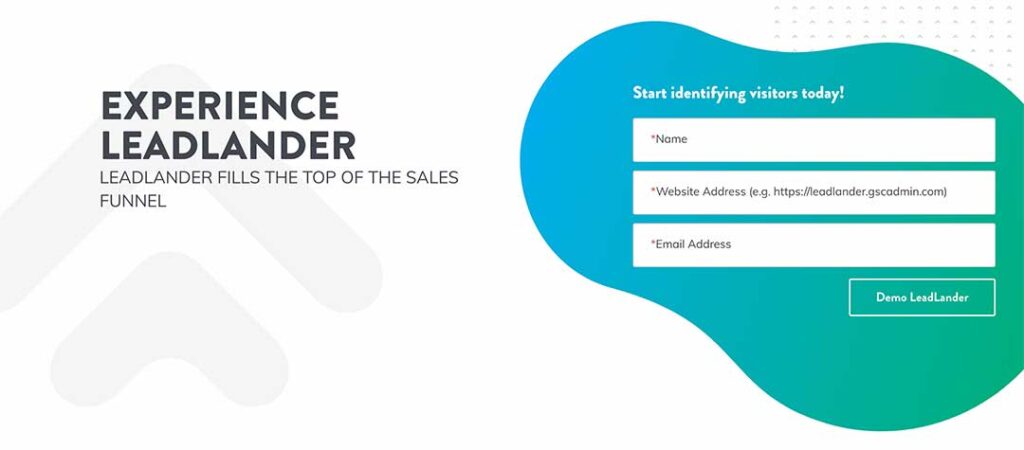Updated April 25, 2022
Depending on what you sell, it can be challenging to truly understand how you should be segmenting your offerings to appeal to as many customers as possible. So what is benefit segmentation really? The best way to learn is often through examples. So we’re back with an update to provide a few additional ways that companies segment their products by the benefits they offer. We hope these will give you further inspiration for how your business can start doing the same.
Most companies with B2B sales teams focus on more than one type of customer. It’s imperative to growth. However, not every B2B company you target will have the same set of needs and goals. There could be a great deal of variety in the types of companies interested in what you offer, and each will have its reason for it. That’s why embracing a marketing strategy like benefit segmentation can be valuable to the B2B sales process. If you’re interested in learning more about benefit segmentation, we’ve got you covered. Keep reading to learn everything you need to know to get started with the practice.
What Is Benefit Segmentation?
Benefit segmentation is one way for a B2B company to group its prospects into like-minded buckets. It’s a type of market segmentation that involves categorizing leads and customers based on the benefits they’re looking to receive from a company like yours.
When you use benefit segmentation, you’ll categorize your consumers based on the perceived benefits they want out of your product. Different customers are looking for different benefits from the same product, and you want to target each group with advertising campaigns that emphasize the right benefits. Some of these perceived benefits might include quality, flexibility, features, or customer service.
Understanding Benefit Segmentation
Think of it this way: four customers are looking to purchase shoes online. Customer #1 is seeking the latest trends. Customer #2 wants shoes that won’t hurt their feet during a 12-hour shift. #3 is desperate to find shoes narrow enough to stay on their feet, and customer #4 wants the perfect shoe to train for a marathon. You can see four different customer values that you can use for benefit segmentation: style, comfort, fit, and utility.
A business owner could apply this information to their product design and marketing techniques. If diverse sizing is important to enough of your customers, you might emphasize your “narrow” shoes more in your marketing efforts. You might even branch out and create more narrow shoe styles.
Benefit segmentation is an opportunity to stand out from the competition. If you understand what your customer values more than your competitor, you can cater your products and marketing accordingly, and become a customer favorite.
How B2B Companies Benefit From This Strategy
Benefit segmentation can be highly beneficial to the B2B sales process in several key ways. This section will cover some of the most important examples of this.
Enables more targeted marketing
First, segmenting your audience based on the benefits they seek will help you appeal to each bucket you create in more targeted ways.
Let’s imagine you create automobile parts for car manufacturers. Some manufacturers will want the highest-quality parts, while others will prefer a blend of affordability and quality.
If you use benefit segmentation, you would be able to ensure that you’re advertising the right products to car manufacturers with each of these goals.
When you employ benefit segmentation, your team will be able to create more compelling marketing campaigns. Doing this could significantly improve the efficacy of your marketing campaigns, which would generate more leads and ultimately lead to more sales.
Improved product/service design
Benefit segmentation can also be an excellent way to start making more effective products and services. That’s because you can use it to clearly define the scope of each item you offer.
Say you offer accounting software for companies. Without benefit segmentation, you might create a single catch-all product too complicated for smaller companies and too basic for larger ones.
But if you analyze the specific benefits each customer expects to get from accounting software, while designing it, you’ll be in better shape. You would likely decide to create two (or even more) versions of the tailor-made software to provide the specific benefits each business is after.
Greater customer retention
When your products and services are fine-tuned to suit the needs of your customer base, you’ll see an increase in customer retention. The advantage of benefit segmentation is two-sided – not only will you be able to improve your products to suit your customer’s needs, but you will also be able to target and convert leads that are a good fit for your organization.
Reduces the risk of product cannibalization
Product cannibalization is always a risk when a company introduces a new product or service in a category with an established offering. Benefit segmentation reduces the risk of one product eating up the other’s market share and vice versa.
The practice of benefit segmentation ensures you design each new product or service released with a clearly defined benefit. It helps distinguish your offerings from one another, so they don’t blend in your customers’ minds.

Examples Of Benefit Segmentation In Practice
Benefit segmentation is useful for both companies that target other businesses and those that target customers. But the ideas behind benefit segmentation are often easier to grasp if viewed through examples that resonate with the average individual customer.
So we’ll use this section to show some real-world examples of how companies segment their products based on the benefits they offer – know that the same principles apply to B2B companies.
Toothpaste
Toothpaste is a simple product. But there are dozens of different types of it available in most stores. The reason for this is pure benefit segmentation.
People choose their toothpaste for different reasons because they want to get different benefits from it. Some buy whitening toothpaste in the hopes of brightening their smiles. Others struggle with cavities and buy cavity-protection toothpaste. And some just want the cheapest toothpaste they can find.
So many different types of toothpaste exist because there is a specific, segmented demand for each type that you see in the store.
Appliances
The principles of benefit segmentation are at work in the appliance market as well. Most companies that manufacture refrigerators, ovens, washing machines, and other appliances have several products available in each category.
However, these products don’t tend to overlap with one another. Instead, the companies create appliances that offer unique benefits, such as low-cost options, high-quality ones, and professional-grade products.
Skincare products
The skincare product market is similar to the toothpaste market. Consumers shop for products in this category based on what they want to get out of them. That’s why you see skincare products targeting anti-wrinkling, anti-aging, dryness, and more whenever you go to the store.
Olay even uses the principles of benefit segmentation on its Skin Advisor application. The company asks customers several questions and then uses artificial intelligence to recommend the product that is the best fit for their unique skincare needs.
Athletic Gear
We can also look to athletic gear for product segmentation inspiration. When you go to a sporting goods store, you’ll find that apparel is often split into different segments based on the benefits that they offer.
Some athletic clothing is marketed for its performance. This includes features like sweat-wicking, durability, and breathability. But other types of athletic clothing are marketed in ways that emphasize their style or comfort.
This is done intentionally by athletic clothing brands so they can make their products appeal to both serious athletes and folks who just want to look and feel good while getting some light exercise.
Smartphones
Smartphones are also commonly split by the benefits they offer. Some, like iPhones, are marketed to enable creativity. Others are created to fulfill a specific market niche. Jitterbug makes smartphones built specifically to be used by seniors, and other companies market child-safe phones.
The critical point is that you can also design your products to meet a specific market segment. If you think about benefit segmentation during your ideation phase, it could help you create products that are a natural fit for the niche you’re targeting.
Supermarkets
Supermarkets are a great example of when a whole store is built around benefit segmentation. These businesses will often split their products based on consumer benefits.
You’ll typically see health food items grouped so that people looking for quality nutrition find everything they need with ease. Similarly, supermarkets will also put like-items – like the items you might need to throw a good barbecue – in the same place.
It’s an example that shows you don’t necessarily need to market or design your products a sure way to take advantage of the principles of benefit segmentation.
Getting Started With Benefit Segmentation
If you’re interested in using benefit segmentation to help reach your B2B sales goals, here’s a process you can follow to get started with the practice.
Start by defining all of the benefits your products or services provide
The first step towards employing a benefit segmentation strategy for B2B sales is understanding each of the benefits that a company can get from what you offer. Make sure you’re thorough here so you have as much to work with as possible.
Create customer profiles
Who are your customers? Why do they choose your product? Which of your listed benefits are making sales?
Determine whether your shoppers choose you because of your outstanding deals, unique features, advanced technology, reliable customer service, or company values. Create customer profiles based on what motivates your buyers.
Group similar and complementary benefits together
Put benefits that support one another into the same bucket. A smaller company may be looking for an affordable tool but also includes specific features relevant to their needs.
The idea is to create categories that are relevant to a specific group of customers or leads. To do this effectively, you’ll need to have a good understanding of the different types of customers you want to appeal to and what they care about.
Begin targeting market segments based on benefit
Now you’re ready to put it all together. You know what benefits you offer, and you know how those benefits fit together in ways that appeal to specific types of customers. The next step is to put it all into action.
You can begin by clearly defining separate types of products for each group of benefits or customer profile you’ve come up with. After that, you will want to begin creating marketing strategies that promote the products you’ve come up with to the B2B companies that will benefit the most.
Re-engage prospects that have dropped off
Benefit segmentation is a great way to re-engage prospects who have lost interest in your products or services. Get to know your customer’s values, then send them an email that addresses those values. When you cater to each customer’s specific needs, you prevent customer turnover.
Encourage brand loyalty
Benefit segmentation can help you build bonds with your current customers and inspire them to buy from you again. Reach out to your previous customers with your new and improved marketing messages. Invite them to purchase another product or service that offers their favorite benefits.
Other Types Of B2B Segmentation That Can Help With Sales
Benefit segmentation is just one type of B2B market segmentation. It can be effective at helping you create and market products and services that are highly targeted to address the unique needs of different audiences. However, other segmentation strategies may be worth trying as well.
Firmographic Segmentation
For example, you might use firmographic segmentation. This involves grouping businesses that share certain characteristics, such as size, location, or maturity.
This type of market segmentation offers you valuable insights that will inform your advertising campaigns. By grouping organizations based on their attributes, you’ll be able to personalize your propositions and ads, and therefore increase your ROI.
Geographic Segmentation
Another indispensable form of B2B categorization is geographic segmentation. This helps marketers target customers by location. Your approach can be broad (like the United Kingdom vs. the United States) or narrow and specific (like 33414 vs. 33413 zip codes). Geographic segmentation works on the principle that people in a particular location share common interests, needs, and other cultural considerations. Geographic information is completely objective, and it’s easy to determine, measure, and analyze. It’s much more affordable to collect location information vs. demographic or psychographic information, and it can help you spend advertisement funds more efficiently.
Behavior Segmentation
You could also try behavior segmentation. Benefit segmentation is one type of this, but others are worth considering. For instance, you could group prospects based on the technology they use, how they’ve interacted with you, or the channels they use to access your website.
Software like LeadLander can help you collect valuable data about your customers. Once you understand your prospects, you can better understand what benefits you have to offer them. Behavior segmentation will directly lead you to successful benefit segmentation.
Need-Based Segmentation
Need-based segmentation is another technique. One customer segment needs a product like yours for the right low price, while another customer segment needs a product with the most powerful features that will put them a step ahead of the competition.
The best way to segment your customers by need is examining what content attracts them in the first place. Which how-to blog posts are they scrolling through? Which of your competitors do they follow on social media, and which needs do those competitors address? Once you determine your potential customers’ needs, you can create more suitable content to move them along the sales funnel.
Customer Sophistication Segmentation
Here’s another thought… if you don’t know how much your potential customers know, your advertisements will never hit home with them. For example, let’s say your business is promoting a fully managed cloud SQL database with 150 MB of storage. When Edna the business owner (who still uses bulky filing cabinets to store hard copies of everything) sees your ad, she’s not going to understand a word.
Edna could definitely use your business’s products, but you have to meet her where she’s at. This is called customer sophistication segmentation. How much do your potential customers know, and how can you cater to different levels of understanding?
Profitability Segmentation
Profitability segmentation is another option. This involves grouping leads or customers based on lead scoring, budget, or average customer lifetime value.
Profit segmentation can also involve segmenting your products. This process will help you examine which products sell the most and which products generate the highest margins. You can determine ways to add more services, marketing or account support to favor your higher-margin products.
When you are attempting to segment, develop, and promote the right products, other forms of segmentation will help inform your decisions. You need to know which products offer benefits to various customer groups and organizations.
As you can see, all of these forms of segmentation go hand-in-hand. The key with all types of segmentation is grouping like-minded B2B prospects together so you can target them in more specific and effective ways while still using a fairly broad stroke.
How To Get More Out Of Your Benefit Segmentation Strategy
Benefit segmentation can be an effective way to increase sales and build customer loyalty when done well. These tips should help you get more out of it.
Interview your customers
When you use benefit segmentation to create new products, you’re doing so because you believe customers will find them valuable enough to buy. But you can’t know that for sure without asking your target audience directly.
That’s why it’s important to use a user-centric design process in combination with your benefit segmentation practice. Make a point of asking existing users what they value most about your products – see if there’s anything they would change.
Consider getting an in-depth insight into how your audience uses your products in practice. Conducting these interviews should help you focus your design process around the features that truly matter most to your end-users, which should help you sell more units at the end of the day.
Research the competition
It can also be helpful to spend time learning about how your competitors use benefit segmentation before going down this path yourself. This should give you some high-level insight into the types of market segments you may want to address with different products.
You can also use what you figure out by researching the competition to differentiate yourself from what’s already on the market. This is an excellent way to carve out niches for your company.
Consider linking two or more segments together
Create products that address multiple segments at the same time. This can save you money by reducing the number of new products you need to design and may help you stand out from the competition.
For example, you could appeal to cost-conscious customers who care a lot about a specific feature with a unique product offering that addresses these market segments.
Whether or not this makes sense for you will come down to research. If you see a lot of overlap between two or more of your market segments, then creating one product to address those groups could be a great strategy.
Test what you build throughout the production process
You also want to ensure you’re continuously testing and reassessing your products throughout the production process.
For instance, it’ll be important for you to keep checking in with your target customers to ensure that what you’re building is still a good fit for their needs.
This is important because it’s the only way to catch design flaws before they make it into the final version of the product. And it’s often much more cost-effective to fix a design issue early in production instead of after you’ve already released the product to market.
Best practices for benefit segmentation
If you want to get as much out of benefit segmentation as possible, there are a few key strategies to consider. Here’s a look at the best practices for optimizing how you use benefit segmentation.
Focus on optimizing your data
Benefit segmentation relies heavily on the quality of the data that you have. If your data is polluted or incomplete, then the benefit segmentation strategies you develop based on it will be the same.
That’s why the first step to leveraging this practice to achieve your marketing goals is making sure that your data is clean and complete. This way, you ensure you have a solid foundation to build on.
Keep your segments up to date
It’s also important to continuously update and refine your market segments as new data presents. Keep in mind; your customers aren’t static. Their preferences morph over time. So if you want to continue marketing to them in the best way possible using benefit segmentation, you need to see those changes as they occur.
If you’re not adjusting to new data as you get it, then you’ll quickly fall behind.
Look for opportunities to become a leader in niche categories
Most industries today are ultra-competitive. This makes it challenging for new entrants to establish themselves on solid ground to keep up with the most prominent players in the sector.
That’s why many companies now are looking to establish themselves in niche market segments. These present the opportunity to become a leader in a specific part of your industry, which could be great for your bottom line. Benefit segmentation can help you do this more effectively.
When you use benefit segmentation, you can use your data to group your audience into niche segments. Then you can begin identifying which niche segments have the most potential for growth and create marketing materials and products that speak directly to those groups of people.
Use what you learn from benefit segmentation across all channels
If you want to get as much out of benefit segmentation as possible, you’ll want to apply the lessons you learn to all of your existing marketing channels.
When you use benefit segmentation effectively, it can significantly influence how you conduct yourself on social media, how you put together your email marketing campaigns, and even what products you highlight to certain individuals when they come to your website.
You’ll learn more about your audience when you start tracking the data you use for benefit segmentation. So it’s important to update how you think about each marketing channel you use when that data shows you something you weren’t aware of previously.

LeadLander Provides The Data You Need To Segment Your Audience
To be effective with a B2B sales benefit segmentation strategy, you need data. Tracking things like the type of content that specific leads are viewing on your website will help you determine which of your benefit segmentation buckets they belong in.
Our platform provides a wealth of information about the companies that access your site and the type of content they view. It makes it incredibly easy to ensure that you’re serving up the right marketing content to each of your leads.
But don’t just take our word for it. Sign up for a free 14-day trial of LeadLander today to experience the difference we offer for yourself.

Related Reading


